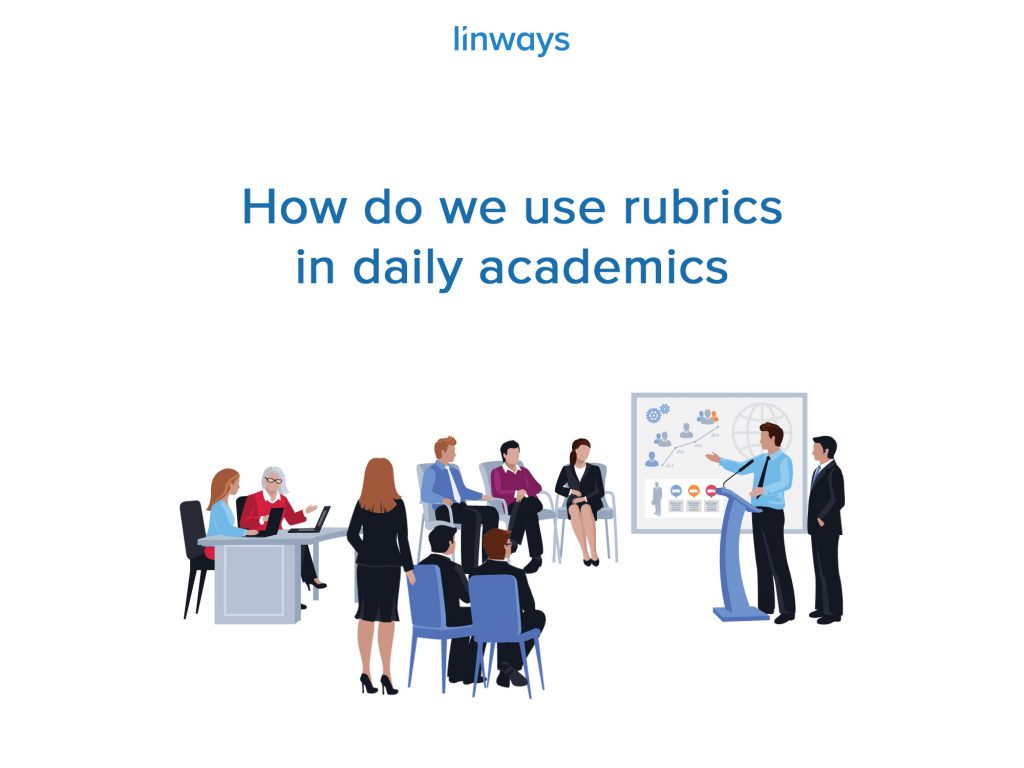
We have reached the third and final blog of our three-part series on Rubrics. The first blog was about getting to know what rubrics is, understanding the basics etc. The second blog covered implementation and development of a rubric for your classroom. So moving on, this blog will cover other important aspects and a creative technology solution for using Rubrics in the classroom
Here’s a few pointers while designing a Rubric scale.
Scale points
Before deciding performance levels take a moment to analyse whether you are measuring competency, knowledge, or how much something was done. Choose your scale accordingly. Writing down your needs and requirements will help to define the scale and performance levels that fits well with the class.
Dimensions
Dimensions are the performance indicators that tells you how if you where does the performance stands on the scale. Ask yourself ‘what is being demonstrated?’. Your instruction modes also should contribute to determining the dimensions of the rubric. In a rubric grid, dimensions determine the number of rows.
Descriptions
These are simple lines or paragraphs that define what each performance level looks like at each scale point. In a rubric grid, the description is the content describing and differentiating each slots. You can define every performance level in various ways. One way is to fill in based on demonstration in progressing from one end of the scale to the other, while another method is to determine the anchors (highest and lowest level demonstration) and then fill in the middle of the scale.
These are all related to each other. You can define them individually, but the scale points, dimensions, and descriptions influence each other while creating. Sometimes if the descriptors does not cover necessary performance levels, you have to add more scale points. Or the number of descriptors are determined by the number of scale points and descriptors.
How to use Rubrics effectively
Develop a different rubrics for different levels of assignments. It might take some time to get on track, but once you are set with different rubrics for different assessments, its very easy to manage academics from there. Whether you develop your own or use an existing rubric, be sure to test it with multiple use cases to ensure reliability.
Integrate rubrics into assignments. Make the rubric a part of your assignment. Share it with your students for better understanding.
You can also leverage rubrics to manage your time. Use the rubric to gain deeper insights into student performance to prepare reports and assessments over time. This is where you will save a great deal of time.
Be prepared to revise your rubrics from time-to-time. Decide upon a final grade for the assignment based on the rubric. If you find that rubric have exceeded or not met the overall qualities you’re seeking, revise the rubric for the next time. If the work achieves high values in some areas of the rubric but not in others, decide in advance how the assignment grade is decided the next time.
You may also consider developing online rubrics through your Academic Management System, if it supports such advanced teaching tools. If you are giving an assignment to be submitted as a digital copy, you can have your online rubric mapped to that particular assignment, so that the students submitting will directly correlates with other data in the system..
The solution that we mentioned earlier that will help you simplify and streamline Rubrics is Linways Academic Management System. It is a platform that helps teachers, management, and the students to manage academics and simplify mundane daily tasks.
Linways helps teachers to build rubrics and map them to academics and assessments to enable proper tracking and report generation. With Linways AMS to support the academics, all the assessments can be easily mapped with outcomes so that their achievement can be easily calculated with minimal manual labour. Teacher can also decide whether to share assessments with their students or not, thereby improving student engagement and participation.
Linways AMS also supports rubrics-based mark entry which takes the workload off the shoulders of the faculty. The data related to the learning outcomes, curriculum, and students will be readily available on the platform. So creating custom reports, rubrics-based teaching methods, and detailed evaluation reports to collect meaningful insights is easy and error-free with Linways.



